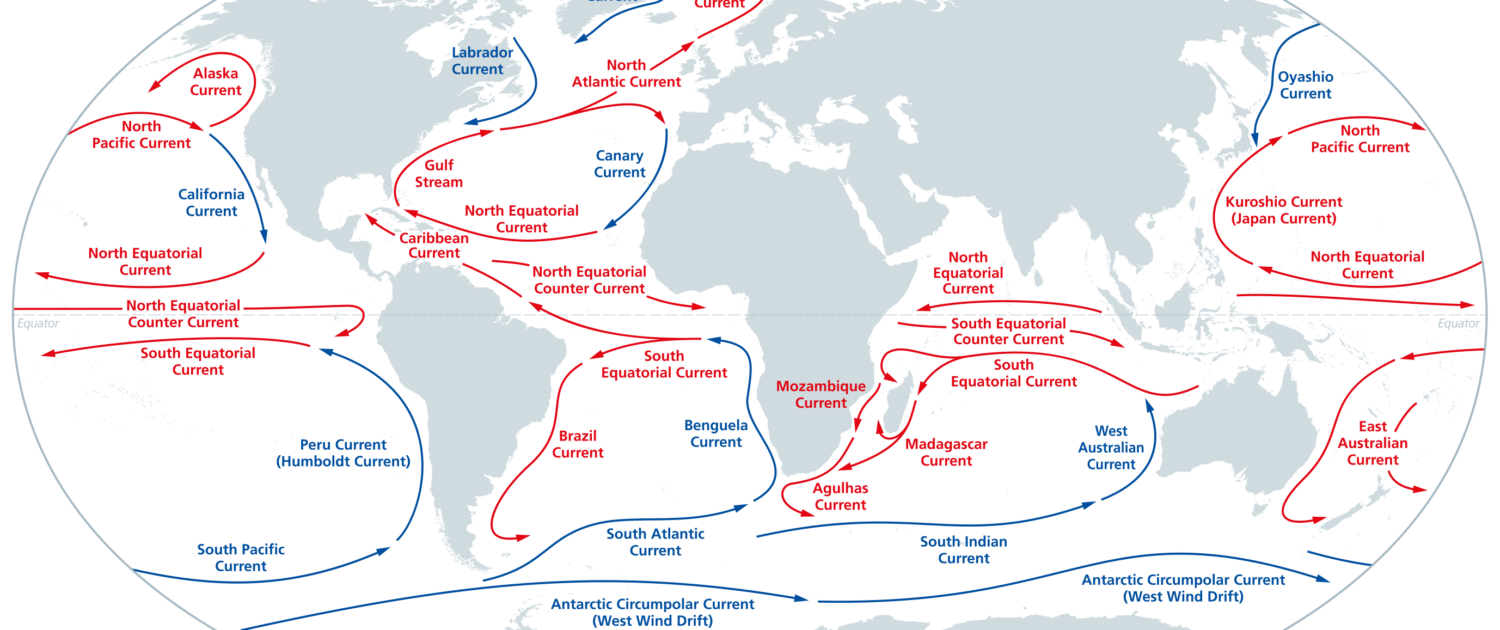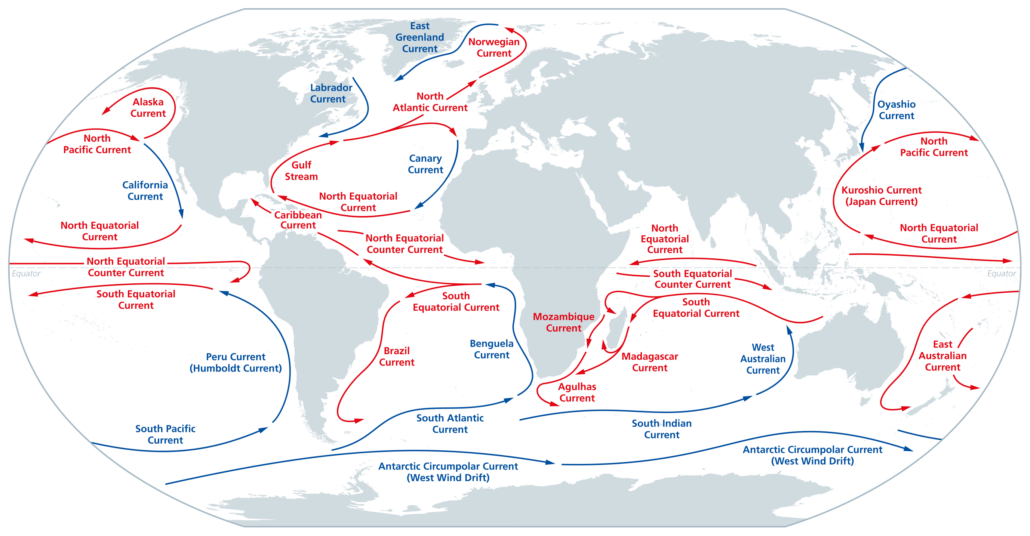Home > Geotopics > How do ocean currents transfer and redistribute heat energy around the Earth?
How do ocean currents transfer and redistribute heat energy around the Earth?
Introduction
Ocean currents play a vital role in regulating the Earth’s climate by transferring and redistributing heat energy across the globe. Understanding how these currents work and their environmental impact is crucial for comprehending global weather patterns, climate change, and marine ecosystems. This guide will delve into the mechanisms behind ocean currents and their significance in heat energy distribution.
What are Ocean Currents?
Ocean currents are continuous, directed movements of seawater generated by various factors, including wind, water density differences, and the Earth’s rotation. These currents can be categorized into two main types: surface and deep-water currents.
- Surface Currents: These occur in the upper 400 meters of the ocean and are primarily driven by wind patterns. The Coriolis effect, resulting from the Earth’s rotation, influences their direction, causing them to move clockwise in the Northern Hemisphere and counterclockwise in the Southern Hemisphere.
- Deep-Water Currents: Also known as thermohaline circulation, these currents are driven by differences in water density, which is affected by temperature (thermo) and salinity (haline). Cold, salty water is denser and sinks, creating a movement contributing to global ocean circulation.
The Role of Ocean Currents in Heat Transfer
Ocean currents act as a conveyor belt, transporting warm water from the equator towards the poles and bringing cold water from the poles back to the equator. This process helps to regulate global temperatures and climate.
- Heat Redistribution: Warm surface currents, like the Gulf Stream in the North Atlantic Ocean, carry heat from tropical regions to higher latitudes. This warms the coastal regions of Europe and affects weather patterns and precipitation.
- Climate Regulation: By transferring heat across vast distances, ocean currents help to moderate the Earth’s climate. Regions that might otherwise be extremely cold or hot benefit from the temperature-balancing effect of these currents.
- Impact on Weather Patterns: The interaction between ocean currents and the atmosphere influences weather systems. For example, the El Niño and La Niña phenomena, caused by variations in the Pacific Ocean currents, can lead to significant changes in global weather patterns, including altered rainfall and temperature distributions.
Key Ocean Currents and Their Impact
Several major ocean currents play significant roles in heat transfer:
- The Gulf Stream: Originating in the Gulf of Mexico, this warm Atlantic Ocean current extends towards Europe, influencing the climate of the eastern United States and Western Europe.
- The Kuroshio Current: A warm current in the Pacific Ocean, it flows northeastward past Japan, affecting the region’s climate and marine biodiversity.
- The Antarctic Circumpolar Current: The world’s strongest current, it flows clockwise around Antarctica, connecting the Atlantic, Pacific, and Indian Oceans and distributing heat globally.
- The Humboldt Current: A cold current flowing northward along the west coast of South America, it impacts the region’s climate and is crucial for the marine ecosystem, particularly for the rich fishing grounds it supports.
The Thermohaline Circulation
Also known as the “global conveyor belt,” the thermohaline circulation is a deep-water current system that spans the entire globe. It is driven by differences in water density due to temperature and salinity. This circulation is crucial to Earth’s climate system, redistributing heat from the equator to the poles and influencing oceanic and atmospheric conditions.
- North Atlantic Deep Water Formation: In the North Atlantic, cold, dense water sinks and spreads southward, driving the thermohaline circulation.
- Upwelling and Downwelling: Upwelling occurs when deep, cold, nutrient-rich water rises to the surface, often along coastlines, supporting marine life. Downwelling, where surface water is pushed downward, helps to transport oxygen and heat into the deep ocean.
Related Topics
Use the images below to explore related GeoTopics.




